Order Anura Rank Species | Phylum Chordata Family Telmatobiidae Higher classification Telmatobius | |
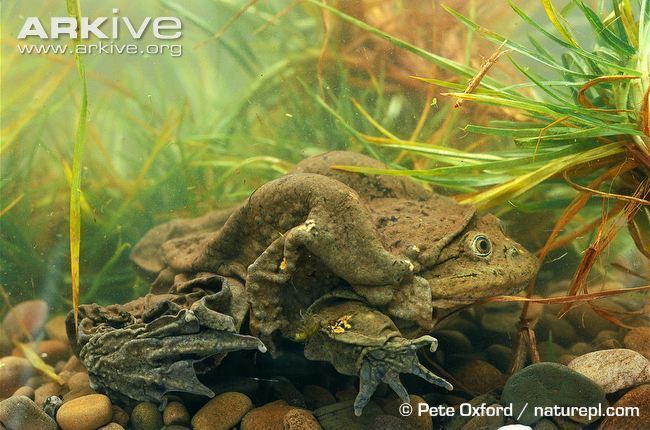 | ||
Similar Telmatobius, Frog, Amphibians, Yellow‑tailed woolly monkey, White‑winged guan | ||
What s killing the titicaca water frog telmatobius culeus
Telmatobius culeus, commonly known as the Titicaca water frog, is a very large and critically endangered species of frog in the family Telmatobiidae. It is entirely aquatic and only found in Lake Titicaca and rivers that flow into this lake in the Andean highlands of South America. In reference to its excessive amounts of skin, it has jokingly been referred to as the Titicaca scrotum water frog.
Contents
- What s killing the titicaca water frog telmatobius culeus
- Telmatobius culeus titicaca water frog
- Appearance
- Ecology and behavior
- Conservation status
- References
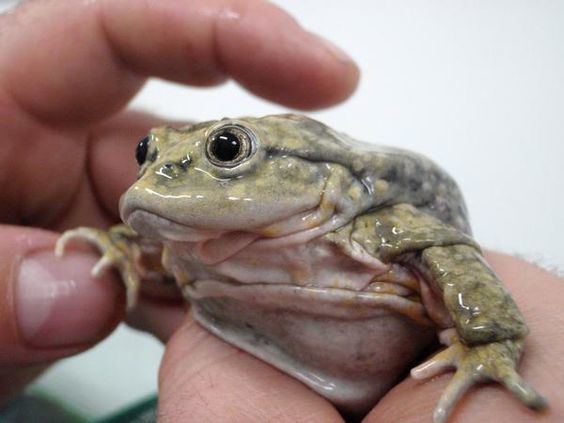
It is closely related to the smaller, more widespread and semi-aquatic marbled water frog (T. marmoratus), which also occurs in coastal parts of Lake Titicaca.
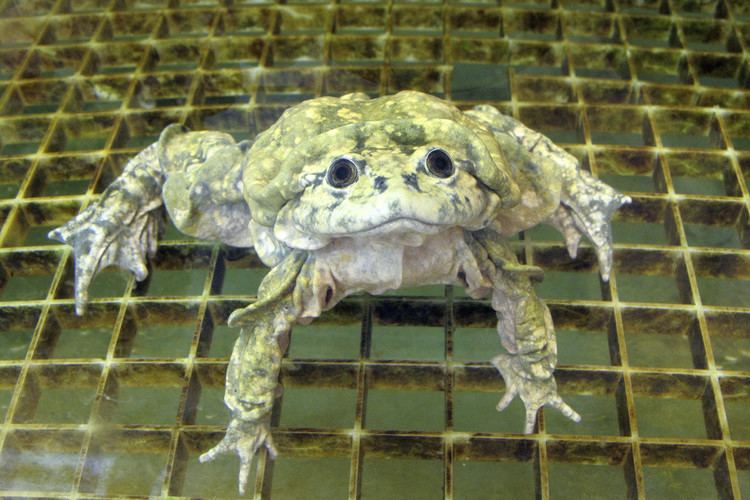
Telmatobius culeus titicaca water frog
Appearance

While the lungs are greatly reduced, this frog has excessive amounts of skin, used to help the frog respire in the cold water in which it lives. The color is highly variable, but generally gray, brown or greenish above, and paler below.
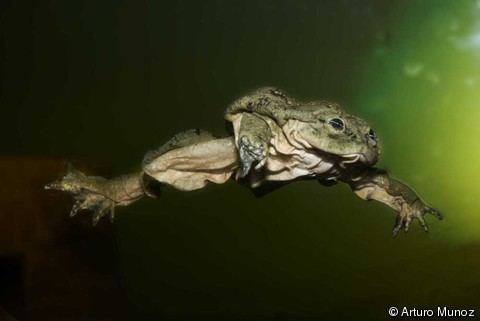
In the early 1970s, an expedition led by Jacques Cousteau reported frogs up to 50 cm (20 in) in outstretched length and 1 kg (2.2 lb) in weight, making these some of the largest exclusively aquatic frogs in the world (the fully aquatic Lake Junin frog is larger, as is the African goliath frog, which sometimes can be seen on land). The snout-vent length is typically 7.5–13.8 cm (3.0–5.4 in). Females grow larger than males.
Ecology and behavior

The Titicaca water frog spends its entire life in oxygen-rich water that typically is 10–17 °C (50–60 °F). It mainly stays near the bottom and it does not surface to breathe if the water is well-oxygenated. It regularly performs "push-ups" to allow water to pass by its large skin folds, which absorb oxygen. It occurs even in deeper parts of Lake Titicaca, although the limit is unknown. The Titicaca water frog feeds on amphipods, insects, snails, tadpoles and fish (including Orestias). It has an extremely low metabolic rate; below that of all other frogs. Breeding is in shallow, coastal water where the female lays about 500 eggs.
Conservation status
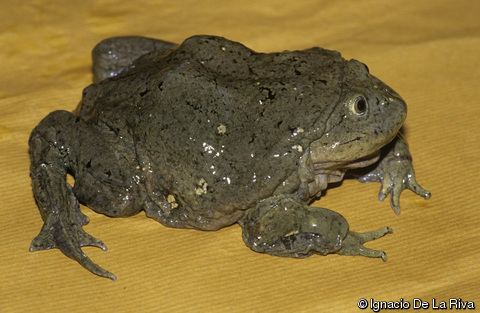
Once common, the Titicaca water frog has declined drastically and is now facing extinction due to over-collecting for human consumption, pollution, and predation of tadpoles by introduced trout. It may also be threatened by the disease chytridiomycosis. It is estimated that it has declined by more than 80% in the last three Titicaca water frog generations, equalling 15 years. Several other species in the genus Telmatobius are facing similar risks.
In the last few years, mass deaths have occurred several times. In April 2015, thousands of death Titicaca water frogs were found in Bolivia on the shore of Lake Titicaca and in October 2016 an estimated 10,000 were found dead in the Coata River (a Lake Titicaca tributary). At least in the latter case, scientists believe pollution killed the frogs.
Conservation projects for the Titicaca water frog have been initiated, including studies to find the reason for the mass deaths and an attempt of establishing a secure captive population that may form the basis for future reintroductions into places where it has disappeared. Earlier attempts of captive breeding were unsuccesful, but projects started in 2010 have succeeded in breeding the species at facilities in both Cochabamba (Bolivia) and Lima (Peru). In 2016, the project was expanded when a group of Titicaca water frogs was sent to Denver Zoo in the United States. Captives have lived for up to 20 years.
